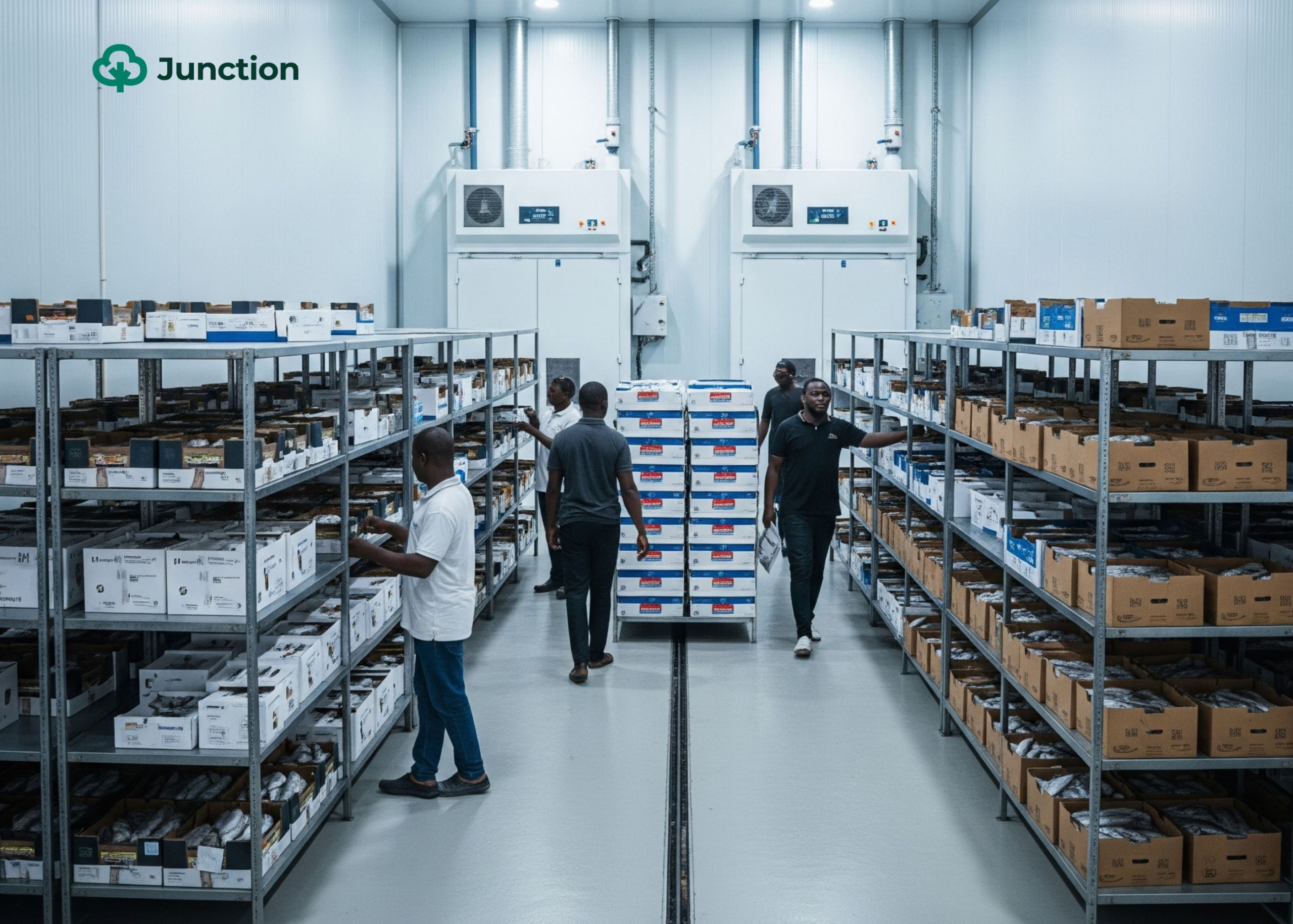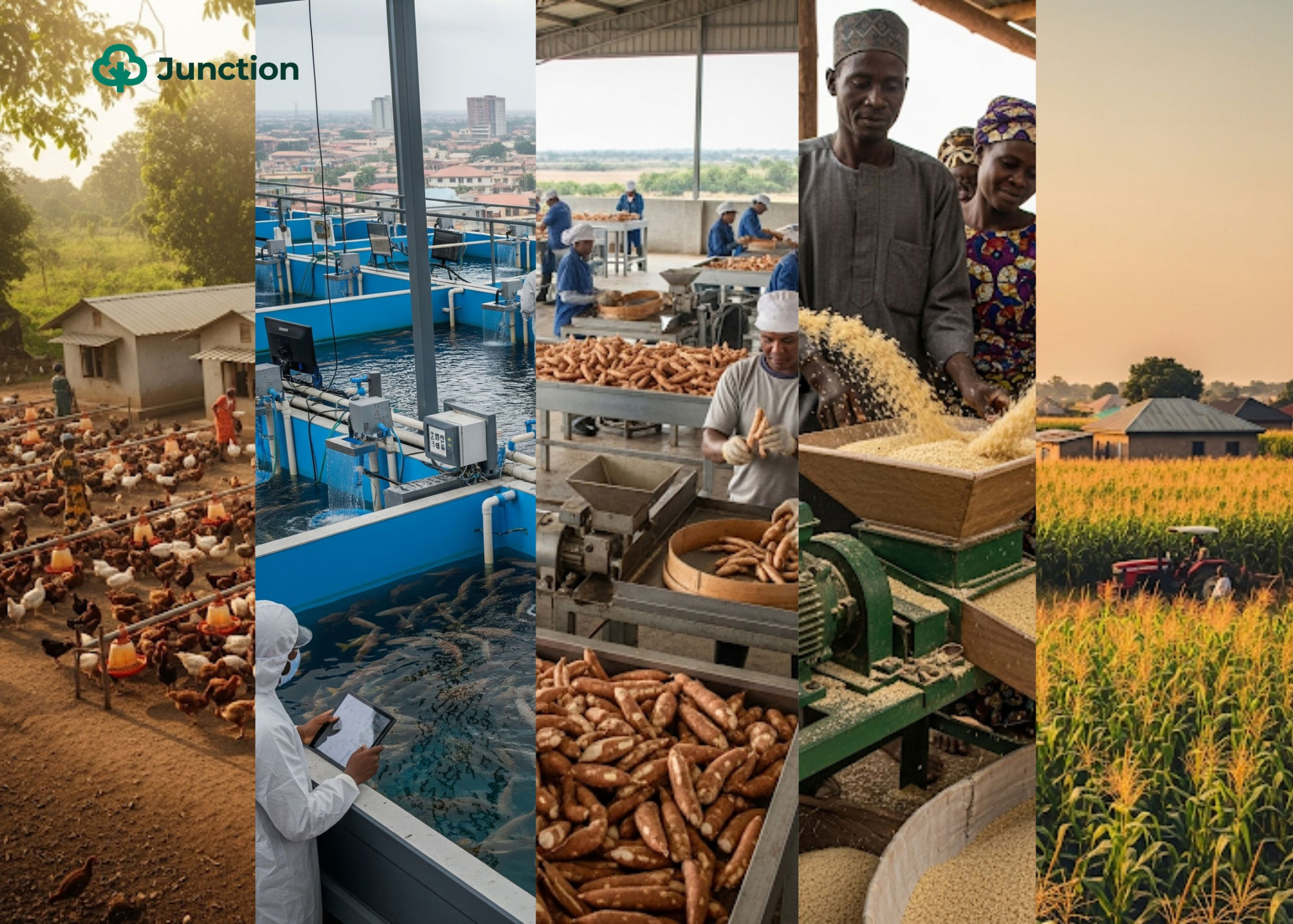Packaging is an often overlooked aspect of the agricultural sector that has the potential to make you millions of naira in 2024. One market research claimed that the agricultural packaging market could surpass $13 billion by 2032!
When many people hear about going into agriculture they immediately think about primary production that involves growing crops and rearing animals. What they fail to realise is that many activities go into turning primary production to finished products and getting them to consumers. The in-between activities are generally regarded as the agriculture value chain.
Consider the tech industry, for example, it will be ignorant to think everyone there is writing codes or are developers. There are several roles like marketing, project management, business analysis, design, sales support, and more, that do not involve writing a line of code.
Of course, having a basic understanding of agriculture and its products will make your packaging business more successful, just like how other activities in the tech industry may reuire basic knowledge of the products even if they don’t involve actively ‘coding’.
In this article, you will see the current state of agricultural packaging in Nigeria and needs of producers that present earning opportunities. You will also learn how technology can effectively solve the challenges plaguing agro packaging businesses in the country.
Agro-packaging needs in Nigeria
First, agro-packaging refers to the process of enclosing or protecting agricultural products to ensure their safe transportation, storage, and sale. It involves selecting suitable materials and designing packages that preserve product quality, prevent damage, and enhance the overall presentation.
This ranges from simple plastic or paper bags to complex packaging systems for bulk products and cold rooms for perishable goods. The goal is to maintain product freshness, prevent spoilage, and attract consumers.
Below are some of the key agro-packaging needs of Nigerian primary producers:
1. Cold chain packaging
While there isn’t much data on agro-packaging in Nigeria, there are insights into its many problems. Nigeria’s major agricultural packaging needs include more than 300 cold chain hubs, according to a statement by the Executive Director of Nigerian Stored Produce Research Institute (NSPR), Lateef Sanni, to reduce post-harvest losses to the barest minimum. He mentioned that the lack of these cold chain hubs has resulted in loss of 40% of harvested produce annually.
Clearly, there is a gap for solutions to this problem, which is worsened by the epilleptic and uneven distribution of electricity. Frequent power grid collapses means that whoever wants to venture into this aspect of agricultural packaging must be ready to provide alternative electrical sources.

A proper cold chain system will maintain a low temperature throughout the production, storage, transportation, and distribution of products. Fruits, vegetables, and many animal proteins require this kinds of systems to be at their best quality when they get to the consumer.
2. Airtight packaging
Nigerians consume a lot of grains, especially rice and wheat. They also supplement thier diet with beans. These insights mean that there is always a need for solutions that ensure these products stay fresh until farmers or distributors are ready to sell them. Airtight packaging provides necessary protection from oxidation.
Despite growing these crops for many years, traditional methods of storing them after harvest are not always the best and there is an opportunity for innovative ways to make storage better.
3. Moisture-resistant packaging
While fruits and vegetables may rot in airtight packages, because they require ‘breathable’ storage solutions except when frozen or at low temperature cold chain packages, they need to be protected from moisture which can cause mold formation.
These kinds of packaging solutions must be resistant to humidity, water vapour, liquid spills, and so on. Typically, the packaging material should have a low water vapour transmission rates (WVTR) and protective coatings or linings can be applied to improve the moisture resistance. There can also be the addition of desiccants, which quickly absorbs any moisture within the packaging.
4. Pest-resistant packaging
Majority of the time when pest infestation is mentioned in the news, at least in Nigeria, it is usually when crops are still in the farms. From quelea birds to the notorious tuta absoluta (tomato ebola), it seems that after harvest, pests simply stop trying.
Wrong. In storage places and during transportation, agricultural products are still prone to pest attacks. Likely, because the produce have been moved to smaller units, pest attacks are more of a personal issue.
Packages made from high-density polyethylene (HDPE) offers a strong barrier against insects. For products that don’t need breathable air, vacuum sealing removes oxygen, creating an environment unfavourable for many pests. Metalised films which reflect light and heat deter some insects and adding insect-repellent coatings offer more protection.
Farmers can benefit from these kinds of packaging as it reduces damages. It will also contribute to improved food safety as it prevents the spread of diseases and pathogens transmitted by pests. environmentally and economically, there is a reduced need for chemical pesticides which cost money and negatively impact sustainable agriculture.
5. Transportation and handling packaging
Some agricultural products require special packaging to prevent damage, maintain their quality and efficiently move them from place to place.
Physical damages can be prevented by shock absorption or cushion packages while vibration damages can be minimised with packaging that stops product movements. If there is stacking involved in the goods transportation, compression resistant materials should be considered.
6. Market appeal packaging:
While most agricultural products cater to nutritional needs of consumers, which is a necessity, there is an advantage in making them appealing to attract buyers.
Visually appealing packages like attractive designs and colours can trigger something in a person to make them choose a particular product. High quality graphics and imagery tells a story that make products resonate with a target market.
Providing consumer information on the products’ packaging is a way to build trust. Easy to open and reseal packaging also make products the wise choise compared to others that are not as user-friendly.
Of course, agro-packaging choices are not universal as some products have different needs. Addressing specific packaging needs for primary producers, processors, or distributors can improve their income, reduce post-harvest losses, increase market access and add value to their products.
In the next section, you will learn how to make the most of these needs and turn them into a profitable business venture.
How to make the most out of an agro-packaging business?
A. Understand the agricultural packaging trends and needs:
To thrive in the agro-packaging industry, a deep comprehension of agricultural packaging trends and needs is important. The previous section attempted to break these needs down but you will need to staying abreast of evolving consumer preferences, regulatory changes, and advancements in packaging technology. Understand the specific requirements of different agricultural products, from fresh produce to grains, to develop suitable packaging solutions. By identifying gaps in the market and tailoring offerings accordingly, you can position yourself as a reliable and innovative providers.
Additionally, consider the target market’s packaging needs like the product type, size, weight, perishability, and transportation conditions. By offering packaging solutions that effectively protect and preserve them will ultimately drive growth and success.
B. Identify profitable niches:
Identifying profitable niches within the agro-packaging industry is key to achieving sustained growth. Focus on specific segments of the market and design offerings to meet unique customer needs and gain a competitive edge.
For instance, specialising in packaging solutions for organic produce or delicate, high-value crops can create a distinct market position. Another example is crafting packages for specific customers like easy-open containers for the elderly or colourful packages for kids.
C. Develop innovative packages:
Innovation is a cornerstone of success in any industry. Developing unique and effective packaging solutions can significantly enhance product appeal, extend shelf life, and reduce waste. You can look into new materials, designs, and technologies that enhance agro-packaging.
Creating packaging that incorporates smart features like temperature indicators or moisture absorbers can provide added value to customers. Additionally, focusing on sustainable packaging options that align with growing environmental concerns can attract eco-conscious consumers and strengthen brand reputation.
By continuously pushing the boundaries of packaging design and functionality, you can differentiate yourself from competitors and capture a larger market share.
D. Build strong relationships with farmers and producers:
Cultivating robust relationships with farmers and producers is essential for the success of an agro-packaging business. By establishing strong partnerships, you can gain valuable insights into the specific packaging needs of different crops and livestock.
When you get these insights and meet the needs in a timely manner, you can earn the loyalty of customers and secure a steady stream of orders.
E. Leverage technology:
Constantly implement advanced software solutions that will streamline operations, improve efficiency, and enhance decision-making.
Inventory management systems, for example, can help track packaging materials, predict demand, and minimise waste. Additionally, data analytics can provide valuable insights into customer preferences and packaging performance.

By taking advantage of technology, most of which are already in existence, you can identify areas for improvement, optimise resource allocation, and gain a competitive edge.
Furthermore, you can use it to enhance customer experience by making ordering easier, provide access to information, and resolve issues.
Conclusion
Agricultural packaging has the potential to make you millions of naira in 2024 and it can be a viable business because Nigeria is a major producer of several foods. Post-harvest losses that occur after produce have left the farm calls for improved packaging solutions, an opportunity for business owners. Meeting these specific needs can assure you of a sustainable and successful business.



